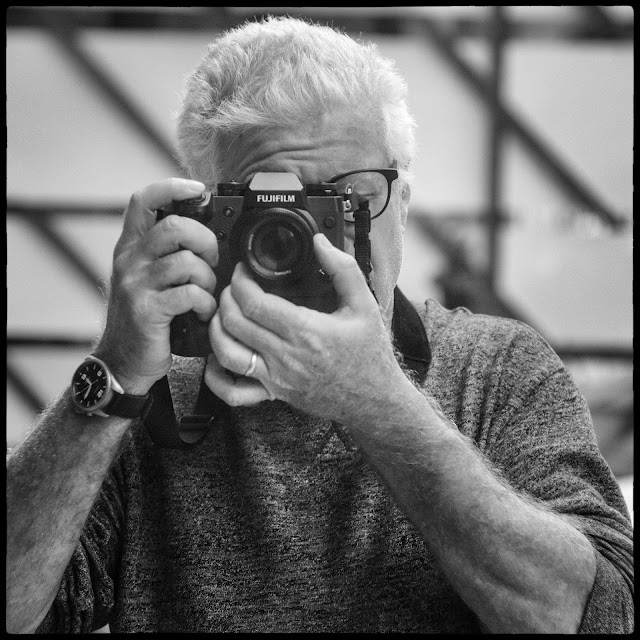This image of Ben was done with a Kodak DCS SLR/n full frame digital camera.
This image of Lou was done with a Hasselblad 500 ELX film camera.
I'm beginning to really enjoy the 6 a.m. workouts. All through high school and most of college our teams were in the pool and breathing hard most days by 5:30 a.m. so I guess I can rationalize that 6 gives me an extra half hour... But I probably move a bit slower now in the mornings than I did back then.
I've changed my schedule because everything was getting too disjointed. We're limited to sign up for 4 masters swims during any seven day period and I was trying to devise a schedule based on spreading out the days in some sort of way that would aid in the overall training. Maybe two days on and one off. A pattern of sorts. But the problem with "on again, off again" was the interruption of a semi-sane sleep pattern. On the days I could sleep in...I couldn't. On the days after a break it was hard to wake up early enough. I decided to switch to four swim days in a row on the presumption that I'd have a fairly well regulated sleep schedule for at least four days in a row. This week was the first trial of that idea and I have to say I think it worked better.
The sunrise over the pool was beautiful today. I first saw it when I was coming off the wall underwater, dolphin kicking on my back. The pool was not hit directly by the first light and was still distinctly blue while the sunrise painted the sky with magenta and orange. The contrast was really wonderful. In this instance the world seems to have had a very, very talented lighting designer.
There are little things that drop hints when your worrying has turned a corner and you find yourself wracked with optimism. I had one of those on Wednesday morning. I photographed a radiologist who was quite beautiful. I asked if she would come back in the near future, off the clock---so to speak, so we could collaborate on a black and white portrait that's more my style than client style. She agreed and that flipped a switch in my brain that suggested I should ask more people more often to come by, play, and try a different approach. I'm looking forward to a new session; already working out the lighting...
My lens fascination for today is the Sigma 85mm f1.4 Art. I know it's too big and I know it's too heavy but the lens makes up for all that with it's stellar performance. Especially wide open! I've bought many a fast lens only to find that I was paying for glass and speed but not really great results when used wide open. It's disappointing to pay thousands for a fast lens only to find that it doesn't really hit the zone of acceptable sharpness until you are a couple of stops down from maximum.
Sigma seems to have understood that having a fast aperture is somewhat meaningless if you can't get solid (and I would presume: stellar) results when using it wide open. They certainly delivered in my copy of this Art series lens. I love the effect of having a tiny wedge of in focus area in a photo but I love it even more when the wedge is fully and satisfyingly sharp, detailed and contrasty!











































